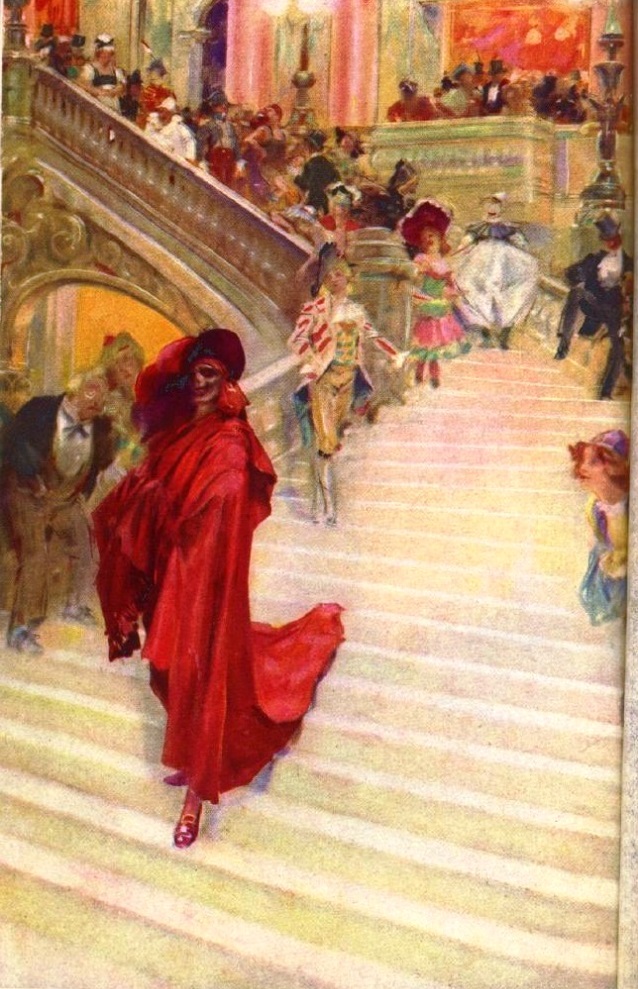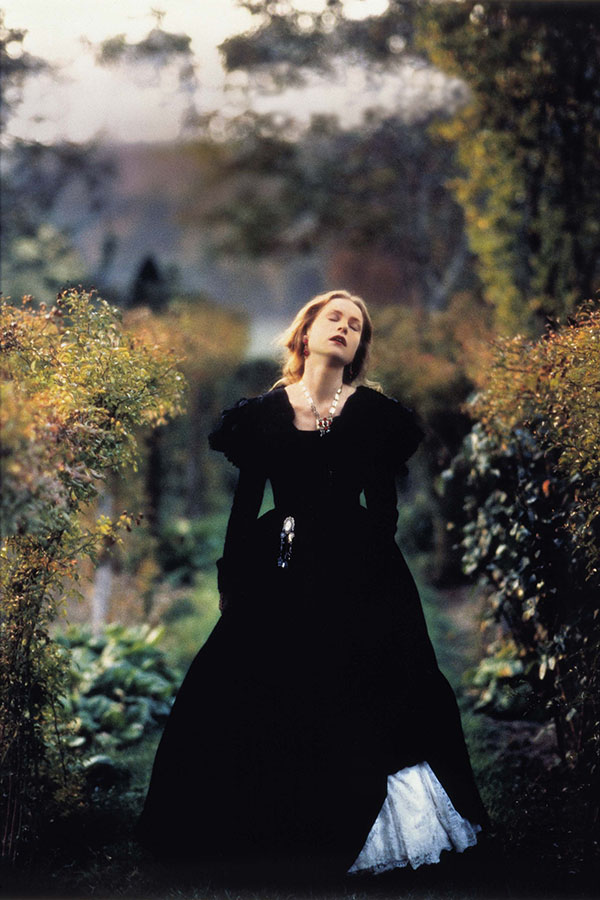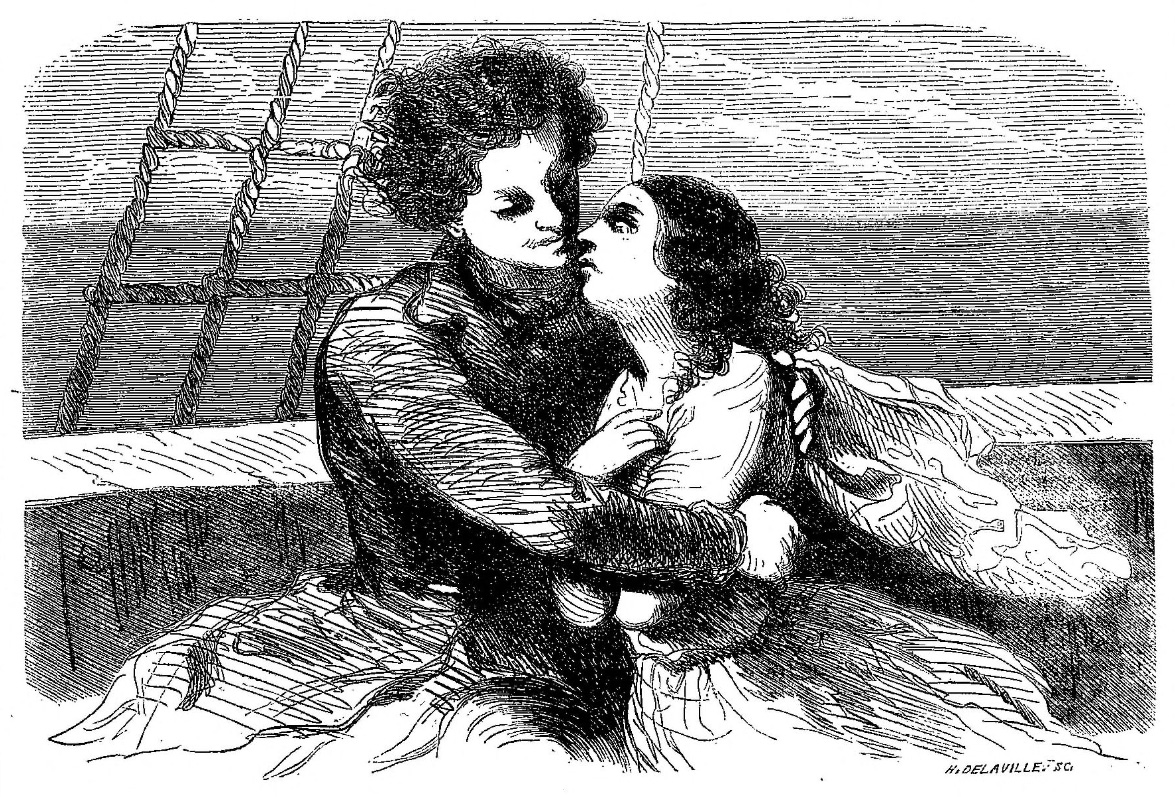French literature is synonymous with romance, from 18th century erotic fiction, satire, and epistolary confessions, to 19th century realism and romance that explores love and life from different classes, and socio-cultural backgrounds, to the 20th century pillars of love amidst decades of political upheaval. Here are five novels that are as intimately intertwined in French history as they are with love.
1. “The Phantom of the Opera,” Gaston Leroux
 Courtesy of Wikimedia Commons
Courtesy of Wikimedia Commons
"The Phantom of the Opera" by Gaston Leroux, published in 1910, remains a revolutionary work in Gothic literature, combining mystery, romance, and horror to create an iconic tale of obsession and tragedy. Set in the grand Paris Opera House, Leroux's novel delves into the legend of the Phantom, a disfigured musical genius who haunts the theater's catacombs. Leroux masterfully intertwines deftly accurate historical details and the wounded spirit of France, suggesting that the Phantom's origins trace back to the body of a dead Communard, resonating with the fraught socio-politics following the massacre of the Paris Commune in the late 19th century. Leroux's exploration of the Phantom's deeply political origins reflect Leroux talent for weaving fiction from a profoundly painful moment in French history and metamorphosing fact into a dark romance which has become a seminal work in Romantic literature.
2. “Madame Bovary,” Gustave Flaubert
 Courtesy of MK2.
Courtesy of MK2.
"Madame Bovary" by Gustave Flaubert, first published in 1856, is a revolutionary work in French literature due to its profound exploration of themes such as romanticism, societal constraints, and the pursuit of individual fulfillment. Set in provincial France during the mid-19th century, the novel follows the life of Emma Bovary, a woman disillusioned with the stifling constraints of her marriage and the cruel banality of provincial life. Flaubert's meticulous attention to detail and his innovative narrative techniques, including free indirect discourse, revolutionized the literary landscape by offering readers a glimpse into the inner workings of his characters' minds and emotions. Through Emma's tragic journey, Flaubert critiques the bourgeois society of his time, exposing the emptiness of romantic fantasies and the suffocating effects of societal expectations on women’s autonomy. "Madame Bovary" challenged traditional moral codes and sparked controversy upon its publication, leading to Flaubert's infamous trial for obscenity. However, its lasting impact on literature lies in its ability to capture the universal human struggle for meaning and fulfillment amidst the hindrances of a rigid society, making it an integral work in the development of the modern novel.
3. “L’Amant,” Marguerite Duras
 Courtesy of France Channel
Courtesy of France Channel
"L'Amant" (The Lover) by Marguerite Duras, published in 1984, holds significant historical importance for its portrayal of colonial Indochina during the 1920s, offering insights into the complex socio-political landscape of the era and the tensions between colonial powers and indigenous populations. The novel's exploration of themes such as identity, desire, and power dynamics challenges social norms and exposes the intricacies of colonial relationships. It reflects broader historical shifts, including the decline of colonial empires and the emergence of post-colonial identities. Duras' innovative narrative style and lyrical prose contribute to the novel's lasting literary significance, blurring the boundaries between fiction and autobiography. "L'Amant" stands as a testament to Duras' ability to capture the complexities of the colonial experience and its impact on individuals' lives, making it a landmark work in French literature.
4. “Indiana,” Georges Sand
 Courtesy of Le coeur et les mots
Courtesy of Le coeur et les mots
"Indiana" by George Sand, published in 1832, intricately unveils the political turmoil of the zeitgeist in which it was written, particularly that of the Bourbon restoration which drastically transformed societal structures, gender roles, and power dynamics of the early 19th century. Through the character of Indiana, trapped in a loveless marriage within an aristocratic milieu, Sand reveals the stark contrasts between social classes and the oppressive constraints faced by women. The novel searches for a woman’s freedom and autonomy, mirroring widespread societal aspirations for liberty amidst the aftermath of the Bourbon restoration which reinstalled the monarchy at the seat of French politics but detrimentally affected the rights of the people. What truly sets this novel apart in a time when women’s rights had been curtailed first under Napoleon and now the new monarchy, Sand challenges conventional gender norms, advocating for women's rights and agency through her portrayal of resilient female characters who are dimensional and complex.